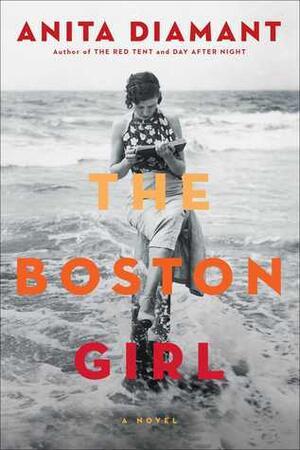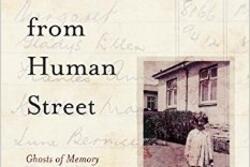Book Review: The Boston Girl
Frequent readers of novels know to expect certain tropes and themes in any coming of age tale: family, school, work, some combination of love, sex, and marriage. If the protagonist is female, then gender discrimination is sure to follow, and if the protagonist is from an immigrant family in America, then conflict over Americanization is equally inevitable. Anita Diamant’s new novel, The Boston Girl, hits every one of these story beats, yet the book is nonetheless an entertaining read enriched by historical research.
Addie Baum is the likable heroine of her own life in The Boston Girl. A framing device sets up the first-person narrative, which starts with Addie as a fifteen year old in 1915 and tracks her through her marriage in 1927, with a few brief episodes filling in the rest of her life after that. In that sense, the book follows the overarching structure of a conventional marriage plot, though Diamant also devotes considerable attention to Addie’s work life. The American-born daughter of immigrant Jewish parents, Addie struggles with her family’s limited means and must give up her formal schooling when her older sister marries and leaves the house. Still, the family does not face the bone-crushing poverty of other literary Jewish immigrant families, such as the Smolinskys in Anzia Yezierska’s Bread Givers. Like Sara Smolinsky’s deeply troubled relationship with her father in Bread Givers, Addie’s constant clashes with her cold mother provide much of the narrative conflict. However, although there are certainly tragedies aplenty in The Boston Girl—a major figure commits suicide, children die during the post-World War I influenza epidemic—the whole tone of the novel is rather light and airy, some of which can be chalked up to Addie’s resilient character.
As a historian, I was particularly interested to see how Diamant handles the historical context of the story. She deserves credit for including social issues of the day like suffrage (though she should know that in America the term “suffragist” was generally used, not the British “suffragette”) and birth control. One of the few harrowing scenes in the novel describes the nearly fatal consequences of a self-induced abortion, after which one of Addie’s friends memorably says “I figure God created Margaret Sanger, too.” As would likely have been the case in real life, Addie’s work options are constrained by lack of formal education, and when she is finally able to move toward her dream of becoming a journalist, her gender works against her as she faces harassment in the newsroom and limitations on the kinds of things she is allowed to write. Most impressive from a historian’s point of view is the significant research Diamant clearly did on both the Rockport Lodge, a vacation home near Cape Ann for working-class girls, and the Saturday Evening Club, a Boston library-based institution offering clubs and informal education to groups of working-class girls and young women from a variety of ethnic and religious backgrounds. The peers that Addie meets as a “Saturday Girl” become lifelong friends and cheerleaders for each other as they strive to have different lives than their parents.
Diamant thanks Harvard’s Schlesinger Library on the History of American Women for access to the Rockport Lodge papers, but I would have liked to learn more in some kind of research or bibliographic note at the end about the historians whose research she mined for the novel and her own research process in writing this book.
I also wondered about the role of Jewishness in Addie’s life. Jewish identity pops up now and again, often in relation to life cycle events like weddings or funerals or in reference to Addie’s father, who becomes more traditionally observant over time. Addie’s older sister Betty and her family become the archetypally successful immigrant Jewish family experiencing economic and geographic upward mobility. I was surprised, given the general historical accuracy of the book, that there is little mention of American anti-Semitism and the impact it likely would have had on the life of someone like Addie Baum during the 1920s and 1930s. How would Addie Baum’s life been different had she been the Italian or Irish or Greek daughter of immigrants? Addie narrates her story to her granddaughter, who is studying to become a rabbi, thus suggesting that Judaism and Jewish identity play a more central role in the younger generation of this family. There is an optimistic historical message in this formulation, too, of the immigrant family whose Americanization does not signal the end of the Jewish family lineage. Perhaps Diamant is also posing a challenge to the younger generation, who will be tasked with articulating something about Jewish identity that their grandparents could not themselves put into words.








This was a great book, our book club loved it! I refer people to it whenever I get the chance! We are now reading Valerie Gross' Magdala. It's been a fascinating read on what Mary Magdalene's life would've been under circumstances we haven't looked at. magdalathebook.com is the site for it, it's a great read for a club as it brings up great discussion topics!